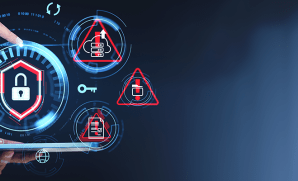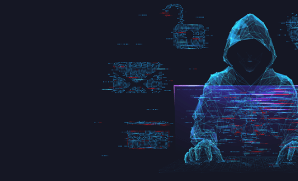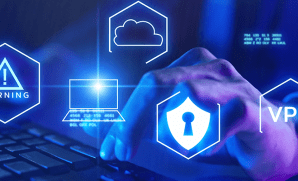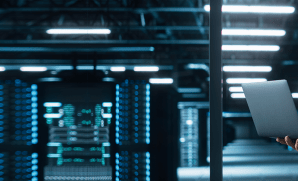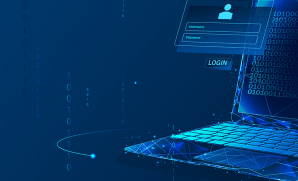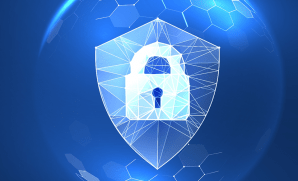Overcoming Legacy System Challenges and Strengthening Security with Cloud-led Modernization
Publish Date: July 11, 2024The cyber threat landscape is complex, vast, and constantly evolving. Organizations must protect their operational technology (OT) and information technology (IT) systems against a volley of malware, ransomware, phishing attacks, and data breach attempts. According to projections, the global cybercrime cost is expected to surge to $23.84 trillion by 2027, a significant increase from the $8.44 trillion recorded in 2022.
Adopting new-age technologies such as generative AI has further exacerbated the threat to business data, with seemingly harmless prompts stealing sensitive information to build large-scale malware campaigns and single-handedly extend an attack surface across the modern enterprise. According to the Global Cybersecurity Outlook 2024 report, 55.9% of respondents said that generative AI would provide an overall cyber advantage to attackers. The report also found that the percentage of organizations maintaining minimum viable cyber resilience has decreased by 31% since 2022. This threat is more pronounced in the Middle East, with the region maintaining its second-place ranking in the total cost of data breaches for two consecutive years, with an average cost of $8.07 million in 2023. This represents an 8.2% increase from the previous year and highlights the urgent need for robust cybersecurity measures.
Legacy System Pitfalls in Cybersecurity for OT and IT Integration
Most enterprises now know that legacy technology and processes are a significant barrier to building cyber resilience. These obsolete systems do not get regular security updates, becoming soft targets for cyber attacks. At times, it is not just the lack of security features but also the inability to continue using a legacy app (due to its dependencies on other structures) that introduces additional security issues. Such dependencies may be related to aging hardware, operating systems, or databases. Integrating legacy systems with newer technology offerings is problematic, resulting in bottlenecks and stifling the adoption of evolved digital capabilities.
Lastly, legacy systems lack comprehensive security visibility. They tend to leave discarded bits of spaghetti code and tools hanging around, possibly in a company’s production environment. Some employees may use small applications that do not appear in IT inventories but contain old open-source code. An organization must plan to phase out such tools as they are no longer under active development. When they slip off the IT radar, security lapses follow.
Reports suggest that the United States, Brazil, and India ranked as the top three countries facing the highest risks of information security lapses in 2023. Significant data, especially from healthcare organizations, gets sold on the dark web after such attacks. Many of these attacks are attributed to legacy systems and outdated software usage.
Leveraging Cloud Infrastructure to Enhance Cyber Resilience
Organizations today invest in evolved digital technologies to innovate their processes, business models, and culture. And IT modernization is essential to make the most of this digitalization. By migrating data and applications housed in legacy architecture to the cloud, businesses can improve operational efficiency, meet changing customer demands effectively, get quick scalability, integrate frequently used applications and software, and save costs. Moreover, when handled well, cloud-based IT migration increases resilience and responsiveness against cyber threats.
The cloud comprises systems, applications, and networks organized and maintained securely by following a ‘shared responsibility’ model. The model requires both cloud platform service providers and users to be responsible for securing the cloud. Based on this shared security framework, companies such as Microsoft, and Amazon Web Services (AWS) have built their cloud solutions from the ground up with a complete focus on cybersecurity. Their measures for intrusion detection and prevention, mitigation of DDoS attacks, management of public SSL certificates, and API management are more robust than most organizations can implement independently. With multi-layered security, IT modernization in a cloud environment protects applications, data, and networks from various threats, including those triggered by generative AI.
Using role-based access control for data and machines, cloud service providers can also help businesses keep unwanted traffic outside a specific scope. There are automatic and scheduled updates to keep the infrastructure secure and up-to-date, preventing manual intervention that affects operations. With a seamless maintenance process, in-house IT staff can focus on high-end tasks.
If there is an attack, disaster recovery in the cloud is quick, thanks to adequate visibility and control over all data, apps, and software in the digital infrastructure. AWS, Microsoft, and Google Cloud have multiple data centers across geographic locations. They run automated backup services to keep all data up-to-date and restore it almost instantly if a hardware failure or natural disaster occurs. Users also get round-the-clock IT support for incident management facilitated by certified partners of cloud service providers.
Lastly, global cloud services have compliance certifications such as ISO 9001, ISO 27001, SOC 1, 2, and 3, PCI-DSS, FedRAMP, FINRA, HIPPA, and CMMC. Companies with specific regulations to abide by in industries such as BFSI, healthcare, government, education, telecommunication, and utilities can rest easy knowing that their critical systems are secure in the cloud.
Empowering Cybersecurity and Innovation with YASH
Cybersecurity and cloud computing are getting increasingly intertwined. At YASH Technologies, we understand this interdependence and harness it holistically to prevent security incidents for our customers. Through our cloud & infrastructure management services, we optimize the systems and processes underpinning your operations, unlocking vast opportunities for digital transformation.
By harnessing the power of cloud computing, AI-ML, automation, advanced analytics, DevOps, and IoT, we accelerate your organizational growth while safeguarding the integrity of your mission-critical business assets. Recognizing that IT modernization is an ongoing journey rather than a one-time achievement, YASH Technologies is committed to continuously assisting you in reaching new heights of innovation.
For further insights about our cybersecurity and infrastructure management services, write to us at info@yash.com.






